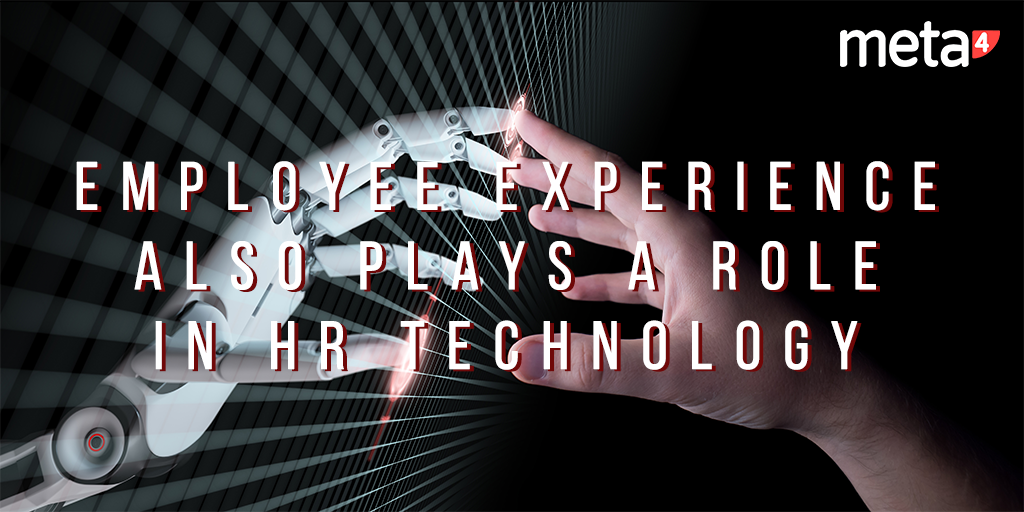If you look after your employees, they’ll look after your customers – symmetry of attention in action.
Symmetry of attention1 is a concept in which the quality of a company’s relations with its customers proportionate to the quality of the company’s relations with its own employees. This has notably led many HR professionals to take an interest in the idea of employee experience, echoing that of customer experience, and which is becoming the top marketing weapon in in a highly connected world. This concept is a pillar of any transformation process through this service. This enables managers with strategic service-related concerns, and consequently marketing, to understand that the real transformation to embark on is managerial.
Why focus on employee experience?
True transformation takes place primarily in the way of working together and management. Evolving the management culture is thus a prerequisite and, in this context, the symmetry of attention then acts as a powerful driver of sense, consistency as well as demand. In a society rediscovering the role and importance of emotions, management cannot back away from showing interest in what people feel.
There is nothing new behind this idea which is similar to Karl Weick’s theory of sensemaking2, a model in which people give meaning to their experience, complementing the model decision makers and managers are trying to put in practice. Perhaps we have simply forgotten that this employee experience is chiefly a matter of perceptions, sensations and emotions that is subjective by definition. However, this subjectivity invites us to question the consistency between what we say, what employees are in fact exposed to, as well as what they perceive, understand and think.
The spectrum of what every employee is exposed to, and which contributes towards building the notion they have of their company, is far too vast to discuss here. Let it suffice to underscore two points to do with a certain kind of consistency:
- On one side, the consistency between the image the company wishes to convey and how this image can be ruined when employees experience a different reality
- On the other, the consistency between what seems “normal” for employees to expect from their company and what they in fact experience.
How does this concern HR technology?
Employees are exposed to many processes driven by the HR function. The quality of the HR function’s delivery contributes to the employee experience. What would you think of, for instance, a company that talks about the attention it gives to employee experience, taking pride in how it relies on design thinking and other hackathons to try to refine it, and yet makes inaccurate pays at the same time? That would make you grin… So, observing corporate life sometimes reveals many surprises!
It is often stated, and rightly so, that the HR function must be irreproachable in terms of quality, costs and time in its administrative processes. Underpinning this affirmation is a notion of objective quality which sometimes ignores the quality employees perceive, but it is just as important. For this perceived quality, the devil is always in the details. For example:
- Interfaces that do not promote a fluid and simple user experience and convey the impression of inefficiency and useless complexity
- Conflicting information between two different processes or applications that, even if there’s always a rational explanation, gives the impression that data integrity could be improved.
- Recurring errors in certain processes that employees eventually get used to, but nevertheless leave traces in the collective mind
- Disparities in simple processes depending on the business, subsidiaries or countries for example, and which hinder consistency in the collective voice that tries to bring together all employees
What to watch out for?
The main challenge for this is the key tenets of HR technology and processes addressed. There are at least six:
- Data quality: This is not easy to deal with in a fragmented environment. Maintaining data integrity is difficult but essential, addressing issues as varied as repositories, information updates, data recovery in some projects, logging, security… The issues abound!
- Process fluidity: This is not just a matter of user interface. It focuses on the ability to put oneself in the client’s shoes to better understand where the difficulties lie. However, often it is in between the stages where everything is played out, when the internal customer is exposed to a “tunnel effect” during which this customer is no longer informed, or when the process owners get a feel for the customer and for improved cooperation …
- Equal treatment: this is one of the factors to which employees are very sensitive. Thus, HR technology that does not deliver the same information (for instance, because it is made up of multiple applications that communicate poorly) to employees depending on where they are located (for example, between two subsidiaries) is a source of dissatisfaction.
- Interface quality: Employees, in their private life, use simple solutions offering quality user experience. They expect tools of the same calibre in business. A source of disappointment is having to multiply clicks and scrolls, using applications with obsolete interfaces, or simply not benefiting from mobile access for certain functionalities.
- Service usefulness: How many companies have thought out their HR technology based on its usefulness to the HR function, without examining what services provided actually deliver to beneficiaries? Here again, the added value brought to internal customers is how the HR function contributes to a quality employee experience.
- Image consistency: Last, but not the least of the issues! The image conveyed by HR technology software may be more or less harmonious with the image that HR wishes to project elsewhere. What about HR technology software whose features are not in step with the digital conversation and its benefits?
Employee experience is a vast subject as seen with these few examples. Besides, as this subject touches on what the employees experience in reality, there is no doubt that the multiple signals a company sends out to them are interpreted, consciously or not, for better or worse.
1DITANDY, Charles., MEYRONIN, Benoît., (2007), Du management au marketing des services, 3rd ed., Paris: Dunod, 2015
2WEICK, K. E., (1995), Sensemaking in organization, Thousand Oaks, CA: Sage Publications, xii-231 p.






